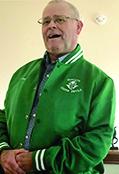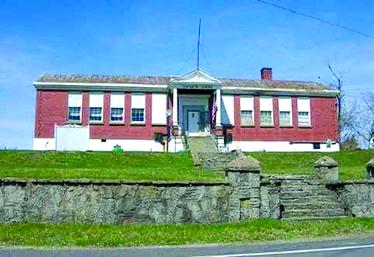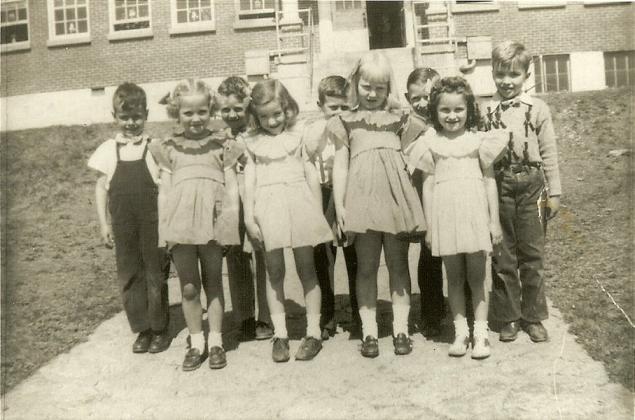By Nila Harris
GOFORTH — Goforth Elementary was one of the five Work Projects Administration schools built in the late 1930s as part of Franklin Roosevelt’s New Deal Plan to get Americans back to work and improve infrastructure.
Although the Goforth Green Devils ceased to exist, many Goforth alum who still live on the northwestern side of Pendleton County are quick to share memories of the old school — including playing in the woods behind the building.
This fenced-in area was the perfect place to build camps out of logs, play basketball at the side of the building, swing on the swings and play on the monkey bars.
Sue Sissel Holder and Edie Thornberry Van Horn remember the swings — fondly, in Holder’s case, but not so much for Thornberry. “I tried to jump off the swing and right into a mud puddle,” she said.
Holder’s brother Ed recalled, “We would try to swing high enough to try to tag an incoming bus with our foot.”
Connie Straub Jackson recounted how she got scared while being on the top of the monkey bars. “I fell off and was unconscious until I woke up on a cot in the janitor’s room. It was quite scary.”
Some children liked to include wildlife as part of their recess antics. Deborah Duncan Edwards recounted a scary tale of her cousin Roger Sullivan: “(He) used to go to the woods and find a black snake and wrap it around his neck and frighten all us girls!”
BEGINNINGS
During the Great Depression when the country’s unemployment rate was a staggering 20 percent, this program helped put more than 3.3 million Americans to work for the WPA. The other elementary schools built through WPA were McKenneysburg, Morgan, Mount Auburn, and Portland.
Goforth, located on Highway 22 West about five miles outside of Falmouth, hosted grades first through eighth from 1937 to 1972. It closed when the decision was made to consolidate five elementary schools and build one school at the northern and another at the southern end of the county.
Prior to the WPA school opening in 1937, the Goforth community had different one- and two-room schoolhouses. Omer Bentle, who was the last principal at Goforth, attended a school on Ballinger Road when he was in first grade. He rode to school with his brother Kenneth, who was a teacher there. According to Bentle, this building housed grades first through twelfth. The last year for this school was the 1936-37 school year.
The school building still stands on Highway 22 but remains empty. For several years, it served as a dance hall, owned by the Adams family. . .
See the rest of this story & photos and other great articles in this week’s Falmouth Outlook, in print or e-edition for $1.00
Continues on Page 12




